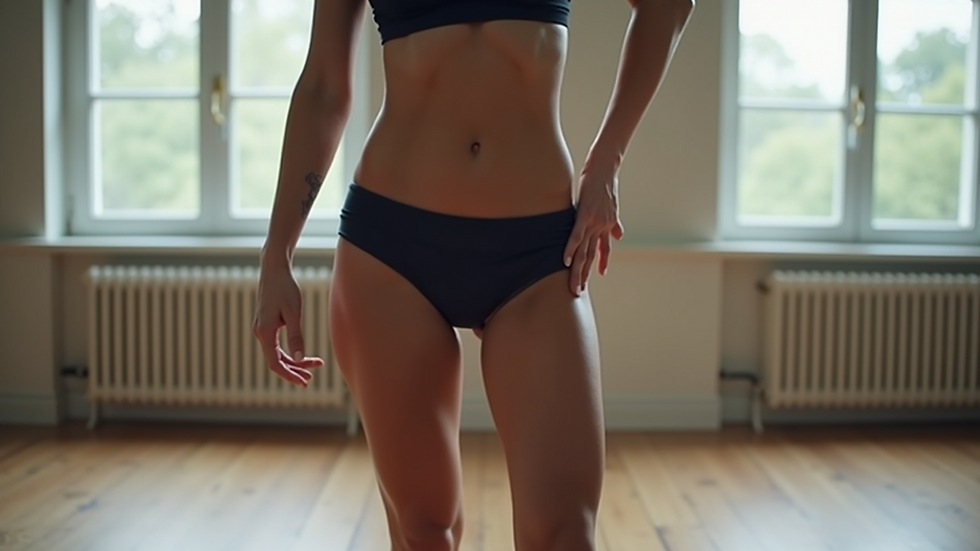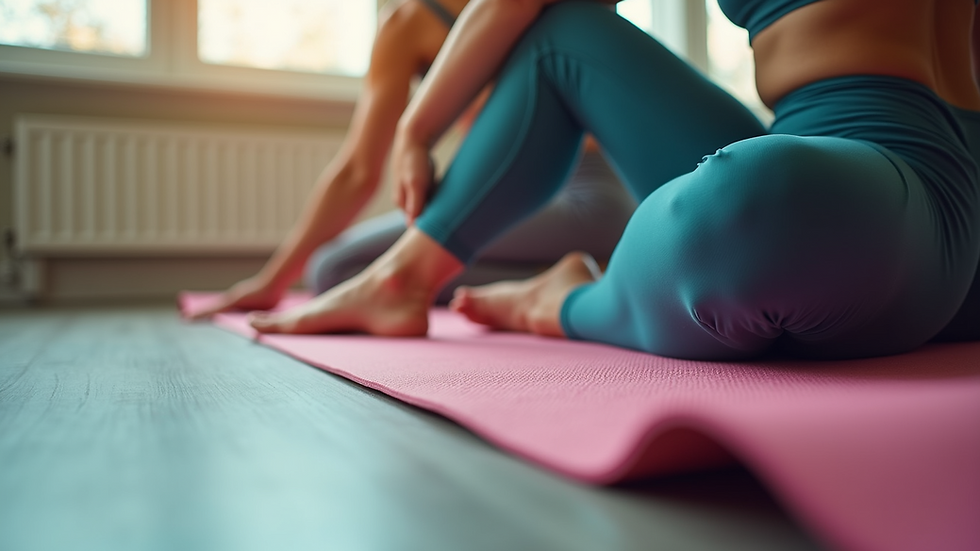Why Strong Hip Flexors Are Essential for Everyday Movement
- Mehdi Bensaid
- Jul 20
- 4 min read
Our hip flexors play a crucial role in our daily activities, influencing everything from walking to sitting comfortably. Yet, many individuals overlook the importance of strengthening these muscles. This blog post delves into the significance of hip flexors, what emotions are linked to them, and effective ways to enhance their strength, providing practical information you can implement right away.
Understanding Hip Flexors
Hip flexors are a group of muscles located at the front of the hip. They are responsible for pulling the knees toward the chest and allowing for movement when you lift your legs. The primary muscles involved include the iliopsoas, rectus femoris, and sartorius. Together, they enable significant movements like walking, running, and bending over.
A common issue arises with hip flexor tightness. Many people have sedentary lifestyles, spending hours sitting at desks or on couches. This prolonged sitting can lead to a lack of mobility and flexibility in these muscles, making them short and tight. As a result, one may experience discomfort or stiffness in the hips and lower back, hindering everyday tasks.

The Importance of Strong Hip Flexors
Strong hip flexors enable efficient movement in your everyday life. They are involved in numerous activities such as:
Walking: Each step requires hip flexor engagement to lift the legs off the ground.
Climbing Stairs: Strong hip flexors help power your legs as you ascend, preventing fatigue.
Sports Performance: Whether playing soccer, basketball, or tennis, powerful hip flexors contribute to speed and agility on the field.
Everyday Activities: Actions like bending down to pick something up or standing from a seated position depend on the quality of hip flexor strength.
Clinic Spotlight: Back 2 Fitness London
Located in Greenwich, our sports therapy clinic helps clients strengthen and stretch key muscle groups like the hip flexors, vital for both daily function and performance.
Statistically, a study published by the National Institutes of Health indicated that adults who engage in regular flexibility and strength training improve their daily functional movements by 40% or more. This improvement can significantly enhance the overall quality of life.
What Emotion is Stored in Hip Flexors?
Interestingly, the physical state of the hip flexors is often linked to emotional well-being. Many experts believe that unresolved emotions related to stress, anxiety, or trauma can manifest as tension in this area. This perspective aligns with concepts found in various body-centred therapies, asserting that our bodies can hold onto negative experiences.
For example, when individuals feel a lack of support or fear in their lives, the hip region can become tight or restricted. Stretching and strengthening the hip flexors can assist in releasing emotional tension, providing both physical and mental relief. By incorporating practices such as yoga or mindful movement, people can work towards releasing these stored emotions.

Strengthening Your Hip Flexors
To enhance your hip flexor health, incorporating specific exercises into your routine is essential. Here are a few effective methods to strengthen these muscles and improve flexibility:
1. Hip Flexor Stretch
A simple yet effective stretch is the lunge hip flexor stretch.
Start in a standing position.
Step forward with one leg, lowering your body into a lunge.
Keep your back leg straight and push your hips forward.
Hold the stretch for 20-30 seconds, then switch legs.
2. Leg Raises
Leg raises help build strength in the hip flexors while also engaging your core.
Lie flat on your back with your legs extended.
Slowly lift one leg towards the ceiling, keeping it straight.
Lower it back down without touching the ground and repeat for 10-15 reps.
3. Mountain Climbers
This dynamic exercise engages the core and hip flexors simultaneously.
Start in a high plank position.
Quickly bring one knee towards your chest and switch legs in a running motion.
Perform for 30 seconds to one minute for a great cardiovascular and strength workout.
4. Bridge Pose
The bridge pose not only strengthens the hip flexors but also the glutes and lower back.
Lie on your back with knees bent and feet flat on the floor.
Press through your heels and lift your hips towards the sky.
Hold for a few seconds before lowering and repeating.
5. Pigeon Pose
This yoga pose is excellent for increasing flexibility in the hip region.
Start in a downward dog position.
Bring one knee forward behind your wrist while extending the opposite leg straight back.
Lower your body down and hold for 30 seconds on each side.

Maintaining Hip Flexor Health
In addition to specific exercises, maintaining good hip flexor health involves adopting a holistic approach:
Stay Active: Regular physical activity plays a significant role in keeping hip flexors strong and flexible. Aim for at least 150 minutes of moderate exercise weekly, including stretching and strengthening exercises.
Proper Posture: Paying attention to your posture, especially when seated, can prevent unnecessary tightness in the hip flexors. Make sure to sit with your feet flat and your back supported.
Take Breaks: If you have a desk job, take regular breaks to stand up, stretch, and move around. This will alleviate stiffness and promote better blood flow.
Consider Professional Help: If you experience persistent tightness or pain, consulting a physical therapist can help identify underlying issues and develop a tailored exercise plan.
By actively working on your hip flexor strength and flexibility, you will experience improved movement patterns, reduced pain, and even enhanced emotional well-being.
Final Thoughts on Hip Flexors
Strong hip flexors are not just about physical strength; they are vital for optimal movement in our daily lives. Engaging in regular exercises, maintaining good posture, and being mindful of emotional connections to this area can significantly enhance both physical and emotional health. For more tips on maintaining your hip flexor health, check out this resource.
Looking for help with hip tightness or lower back discomfort?
Visit Back 2 Fitness London, your trusted sports injury clinic in Greenwich. We specialise in treating postural imbalances, hip mobility issues, and movement dysfunctions through evidence-based therapies, corrective exercise, and personalised support.
Investing time and effort into your hip flexor health will undoubtedly improve your overall quality of life, enabling you to move through each day with greater ease and comfort.




Comments